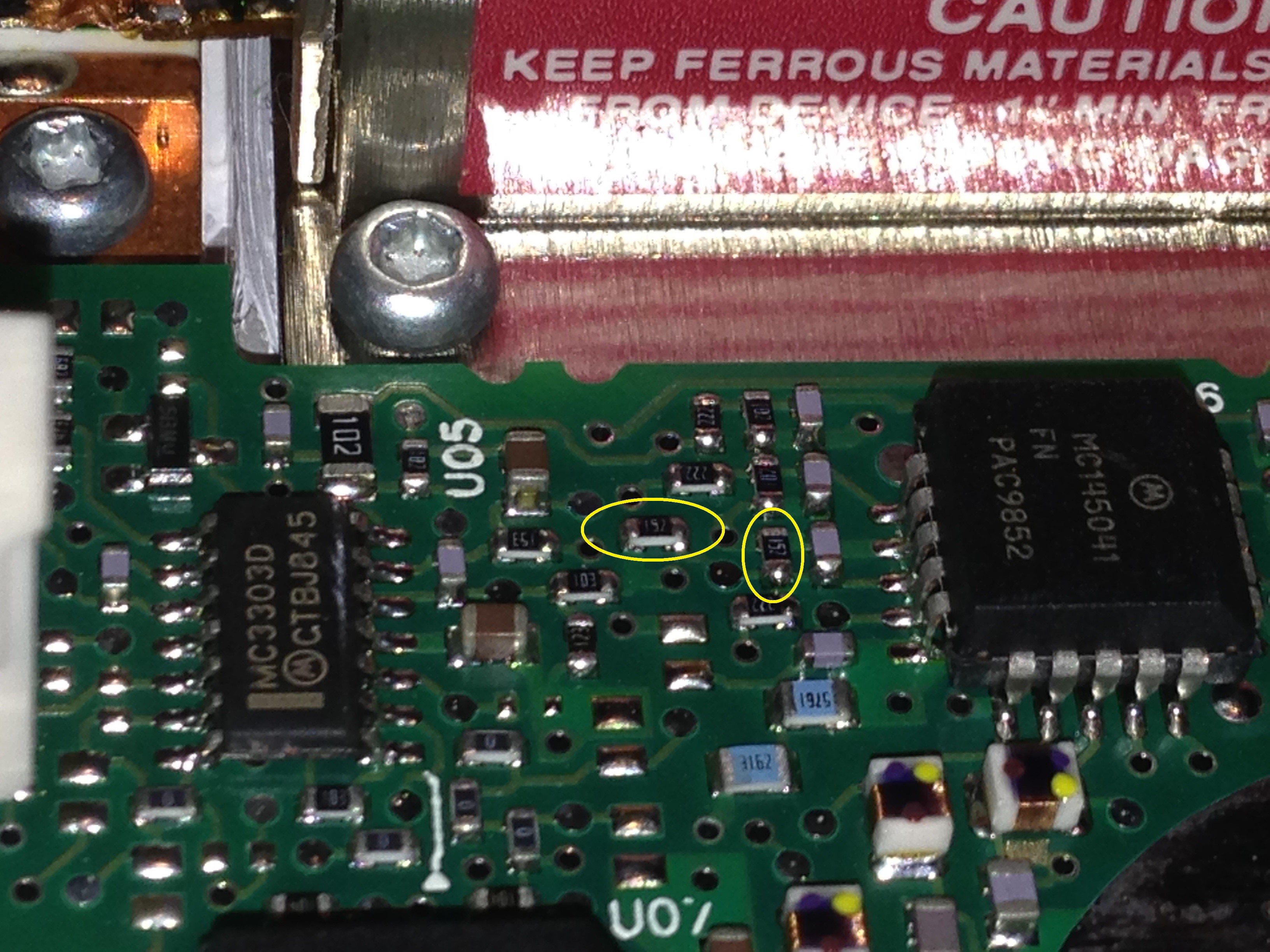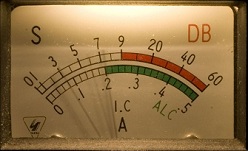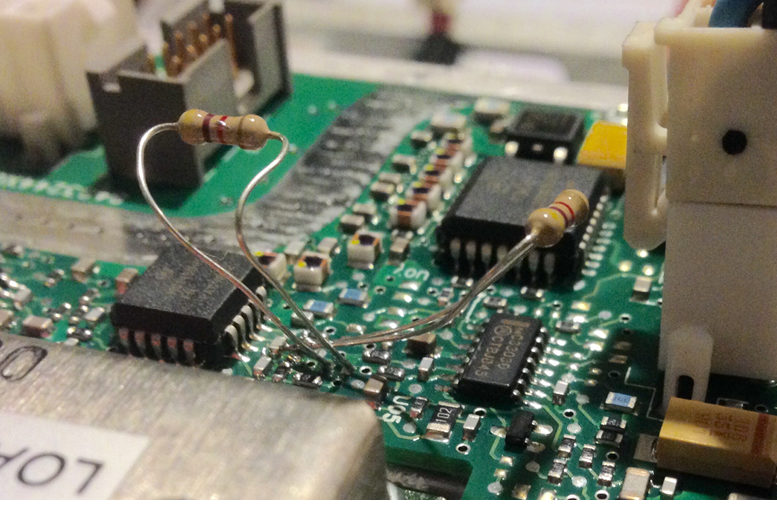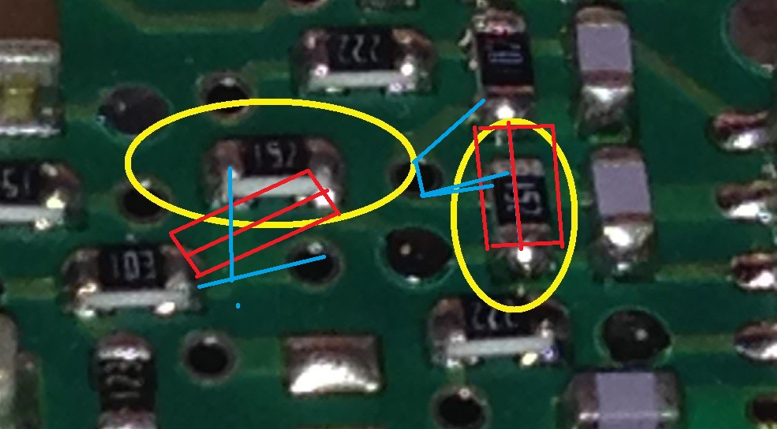One of the interesting things about equipment on the market today is the commonality between different models and bands of radio equipment. In years past, it was just the basic housings and controls that were common, maybe some control parts – but RF boards varied widely.
Not so much anymore…. but they still have some slight variations between bands and sub-bands, so, for example, a 136-146 MHz radio and a 150-174 MHz radio have slight differences in the RF section, and some small logic changes to positively identify what is what. Case in point is the Motorola MTR2000 series VHF repeaters.
So – the story begins.
Brad bought a 100W Motorola repeater, intending to use it for W0EEE. We subsequently learned that the 100W variety of this particular repeater comes in two flavors – 136-156 MHz, and 150-174 MHz. There also exists a 40W, 136-174 MHz model. Since we’re planning on putting our repeater on 145.450 MHz, Murphy’s law naturally dictates that the one he bought was the 150-174 MHz variety.
Upon inspection of the MTR2000 repeaters, we learned that of the three major components (receiver, transmitter, and amplifier), only ONE component, the amplifier, is band specific. the receiver and transmitter are both 136-174 MHz capable. There are three configurations, based on the specific amplifier:
- 132-154 MHz High Power (100W)
- 150-174 MHz High Power (100W)
- 132-174 MHz Low Power (30/40 W)
Obviously, the high power 132-154 MHz model is the “golden” model that is rare and expensive, followed by the low power wide band variety, since those two will cover the 144-148 MHz amateur band. The 150-174 MHz high power variety is somewhat common and a lot cheaper.
So… what is the difference? Not much.
While I’m sure the tuning changes slightly on the adjustable components (of which there are not many), the biggest hardware difference is the internal circulator. The bands and power levels correspond to the on-board RF circulator, which internally protects the amplifier from high VSWR loads, such as mismatched or damaged antennas. The different radio configurations correspond to the catalog offerings of a company named Alcatel.
In doing some research, a drop-in replacement (non-connectorized, solder-in) will run about $250. Not bad to upgrade the system to what is wanted.
Based on the information at http://batboard.batlabs.com/viewtopic.php?t=98246,I learned that the amplifier “identifies” itself to the radio and software through the use of 2 chip resistors on the circuit board. The values of these resistors determine the type of amplifier.
The resistors installed were both 1.5 k ohm resistors (bear with me here)…the simple instructions from Batlabs stated:
“Change R4560 from 1.5 K to 4.7 K
Change R4564 from 1.5 K to 4.7 K”
According to Batlabs, replacing those two resistors with 4.7 k ohm resistors would make the amplifier think it was a 136-174 MHZ, 40W unit. This would have worked very well for our purposes – checking the to the local electronics shop (http://www.gatewayelectronics.com) for some 603-series SMD 4.7k ohm resistors resulted in learning they were out of stock on that ONE value. They were COMPLETELY out and did not know when they would be getting more. The major challenge was locating the components – it was NOT easy. The image below highlights the two components of interest. Note the circulator at the top of the image for reference:

I searched everywhere I could think of locally (even looked at work), and could find NOTHING. My next step was to use 2 much larger resistors to verify the concept – the kludge was ugly, but it did function, and proved what I wanted to prove – changing those resistors made the thing do what I wanted.
Further google searching (source needed) yielded an interesting find – using 15 k ohm resistors in place of the 1.5 k ohm resistors will make the amplifier think it’s a 100W 136-156 MHZ model – so we could get the full 100W out in the amateur band. Gateway DID have some of those in stock, and after swapping them in place of my previous modification made the amplifier identify as we wanted.
The issue I ended up having, however, was that the resistors I got (603 series, I believe) were too big – I believe it’s a 601 or 602 series on the board. Some inspection revealed that the pads that the identification resistors are on connect to other components and pads nearby with visible traces. The larger series components can be made to work – though it’s not an elegant solution! The image below shows the traces connecting to the ID components (in blue), as well as an outline of where I installed the slightly larger components (in red). The two resistors in yellow are the ones that had to be removed and replaced (original parts).
WORDS OF CAUTION-
Because the unit is now operating out-of-band for the circulator, it may be VERY sensitive to higher VSWR at the antenna. I STRONGLY suggest getting an external circulator for the transmit side, OR replacing the internal unit with a comparable model to handle the power. In lieu of that, I would recommend turning the power down a bit (75W?), just to keep the PA from heating up if there is a questionable VSWR condition.
Now… the real story starts… Peter, WB9KHR (SK), one of my “elmers” used to have a saying when he was repairing things- “we’re not making it as good as new… we’re making it BETTER than new”.
I finished the modification and programming, and buttoned up the repeater Thursday night, and set it aside.
The next day, I started on another project. This new project needed some connectors, a box of which came from Peter’s workshop.
When I opened the box up, right on top was ONE package (and this is the ONLY package of SMD components i ever saw going through his workshop) of 4.7 kohm surface mount resistors – the ones gateway was out of, and would have only “half” fixed the repeater. Had I had those resistors on hand to begin with, I never would have gotten the repeater to operate at 100W output, and it would have been only a “halfway” mod. I was forced to work through the whole process to get to a machine that puts out the power we wanted on the frequencies we wanted!



Thank you for taking the time to respond to my question about my Motorola MTR-2000 problem.
Thanks to your suggestions I was able to find a fix. I had done this mod many times before and it always worked. This time it did not work…
The (2) SMD resistors I had been using refused to work. When I measured the values of one resistor it was about 14K and the other was about 15K.
I did several tests on several repeaters. I made up an extention so I could try various resistor values while in circuit. The problem was the accuracy of the (2) resistors. When one resistor was 14k and the other 15K it would not work. When both were 14K it worked fine. When both resistors were 15K it worked fine.
(This would seem to indicate that the approximate values are important to set the band, but they need to be closely matched for some sort of comparator operation? -KRC)
The SMD resistors I was using when I checked were 5% tolerance. I don’t have a manual or any information on the MTR-2000… but I was able to download a MTR-3000 manual and the parts list said it used a 1% tolerance resistor for this function.
I was able to purchase some SMD 15K, .05% tolerance resistors from Mouser. To buy the 1% required me to buy a minimum of 5,000 units? So I paid a little more, they are cheap.
I installed the new resistors today and it worked great. I modified (4) VHF 100w repeaters this afternoon…
Happy day,,,
Thank you very much for your help…
Jerry Dixon, KC0KW